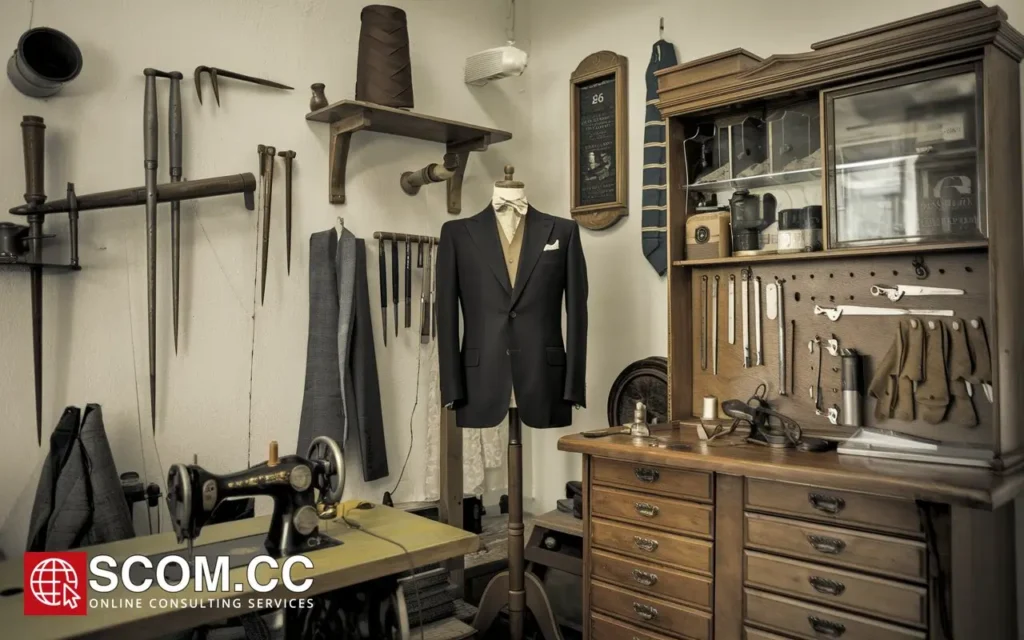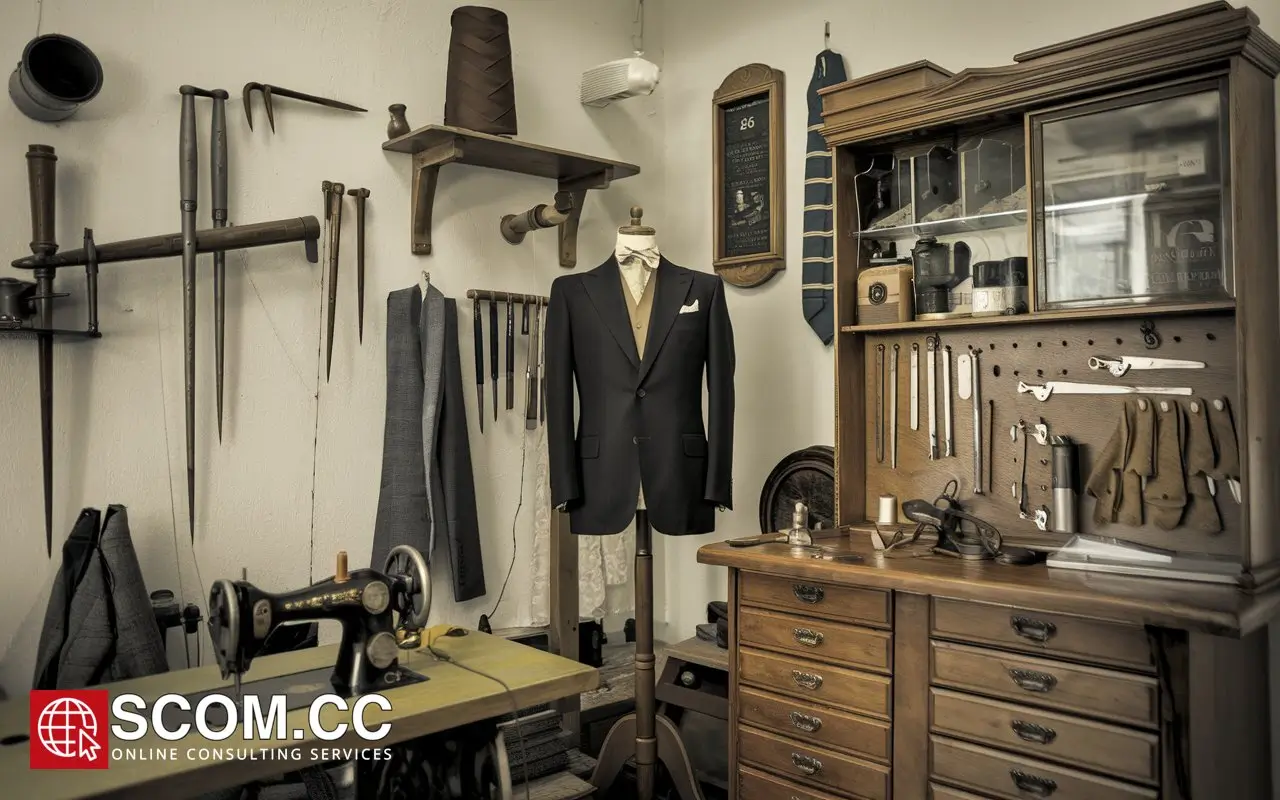How Did Tailoring Influence the Fashion Industry During Major Historical Periods?

- How Did Tailoring Influence the Fashion Industry During Major Historical Periods?
- The 18th Century: The Birth of Modern Tailoring
- The 19th Century: Industrialization and Ready-to-Wear
- The Early 20th Century: War and Post-War Fashion
- The Late 20th Century: Globalization and Technology
- The 21st Century: Tailoring in the Modern Era
- Conclusion
-
FAQ
- 1. How did tailoring influence fashion in the 18th century?
- 2. What impact did the Industrial Revolution have on tailoring?
- 3. How did military uniforms influence civilian fashion in the 19th century?
- 4. What changes did World War I and II bring to tailoring?
- 5. How did the rise of haute couture affect the fashion industry?
- 6. What role did globalization and technology play in late 20th-century tailoring?
- 7. How is tailoring evolving in the 21st century?
How Did Tailoring Influence the Fashion Industry During Major Historical Periods?
The art of tailoring has had a profound impact on the fashion industry, shaping trends and defining styles across different historical periods. From the opulent courts of the 18th century to today’s global fashion hubs, tailoring has not only reflected but also influenced cultural and social dynamics. This exploration delves into how tailoring has impacted the fashion industry through major historical periods, examining key developments and their lasting effects.
The 18th Century: The Birth of Modern Tailoring
The Influence of Aristocratic Fashion
In the 18th century, tailoring was closely tied to the opulent fashion of European aristocracy. Tailors played a crucial role in crafting garments that symbolized status and wealth. The frock coat, waistcoat, and breeches became prominent features of men's fashion, each meticulously tailored to fit the elite. The emphasis on luxurious fabrics such as silk and velvet, along with intricate embellishments, highlighted the craftsmanship involved in tailoring.
Impact on Fashion: The tailoring practices of this era established foundational elements of modern men's fashion. The focus on fitted garments and structured silhouettes influenced subsequent fashion trends, setting standards for both formal and casual attire.
Tailoring Techniques and Innovations
During this period, tailors developed and refined various techniques, including hand-stitching and pattern drafting, which laid the groundwork for future tailoring practices. The use of personalized measurements ensured a perfect fit, a principle that continues to be central to tailoring today.
The 19th Century: Industrialization and Ready-to-Wear
The Industrial Revolution’s Impact
The 19th century brought significant changes with the onset of the Industrial Revolution. The invention of the sewing machine by pioneers such as Elias Howe and Isaac Singer revolutionized the tailoring industry. This technological advancement enabled faster production of garments and allowed tailors to experiment with more complex designs.
Ready-to-Wear Fashion: The rise of ready-to-wear clothing marked a major shift in the fashion industry. Tailors began producing garments in standardized sizes, making fashion more accessible to the broader population. This democratization of fashion changed the way people perceived and purchased clothing, moving away from bespoke tailoring towards mass production.
The Influence of Military Uniforms
Military uniforms from this period, characterized by their functional design and structured cuts, influenced civilian fashion. Elements such as epaulettes, double-breasted jackets, and tailored trousers began appearing in everyday wear, blending practicality with style.
The Early 20th Century: War and Post-War Fashion
The Impact of World Wars
The two World Wars had a profound effect on tailoring and fashion. During World War I, the emphasis on utility and durability led to the incorporation of military-inspired elements into civilian clothing. Trench coats, utility vests, and bomber jackets became popular, reflecting a need for practical yet stylish attire.
Post-War Glamour: Following World War II, there was a resurgence of luxury fashion, spearheaded by designers like Christian Dior with his New Look. This era emphasized feminine silhouettes, including full skirts and cinched waists, showcasing the influence of tailoring on shaping women's fashion.
The Rise of Haute Couture
The mid-20th century saw the rise of haute couture and the prominence of high fashion houses. Tailors and designers created bespoke garments that became symbols of elegance and sophistication. The craftsmanship involved in haute couture highlighted the artistry and skill inherent in tailoring.
The Late 20th Century: Globalization and Technology
Global Fashion Trends
The latter half of the 20th century was characterized by globalization and the blending of cultural influences. Tailoring practices adapted to incorporate international styles, with a growing emphasis on individual expression and diverse fashion statements.
Technological Advancements: The advent of computer-aided design (CAD) and digital printing transformed tailoring, allowing for greater precision and creativity. These technologies enabled designers to experiment with new fabrics, patterns, and designs, further influencing fashion trends.
The Emergence of Fast Fashion
The rise of fast fashion in the late 20th century altered the traditional tailoring landscape. The demand for quick turnaround times and affordable prices led to the proliferation of mass-produced garments. Despite this, bespoke tailoring continued to thrive as a symbol of quality and exclusivity.
The 21st Century: Tailoring in the Modern Era
Sustainability and Innovation
In the 21st century, there has been a growing focus on sustainable fashion and eco-friendly tailoring. Designers are increasingly using recycled materials, ethical practices, and innovative techniques to address environmental concerns. 3D body scanning and virtual fitting technologies are also reshaping the tailoring process, offering new ways to achieve precision and personalization.
Influence of Celebrity Culture: Today’s fashion industry is heavily influenced by celebrity culture and social media. Tailoring trends are often driven by high-profile events and endorsements, with bespoke and luxury garments showcased on global platforms.
The Future of Tailoring
The future of tailoring promises continued innovation and adaptation. As technology and sustainability become central themes, the art of tailoring will likely evolve to meet changing consumer demands and environmental challenges. The enduring legacy of tailoring will continue to shape the fashion industry, reflecting both its historical roots and future possibilities.
Conclusion
Tailoring has been a dynamic force in the fashion industry, influencing trends and shaping styles across various historical periods. From its origins in the 18th century to its modern manifestations, tailoring has adapted to reflect societal changes and technological advancements. As we look to the future, the art of tailoring will undoubtedly continue to evolve, maintaining its pivotal role in fashion.
Summary Table
| Historical Period | Key Developments in Tailoring | Impact on Fashion Industry |
|---|---|---|
| 18th Century | Introduction of frock coats, waistcoats, and breeches; use of luxurious fabrics like silk and velvet | Set foundational elements for modern men’s fashion; established focus on fitted garments and structured silhouettes |
| 19th Century | Industrial Revolution innovations such as the sewing machine; rise of ready-to-wear clothing | Democratized fashion; made tailored clothing more accessible; introduced military-inspired elements into civilian wear |
| Early 20th Century | Influence of World War I and II on practical design; rise of haute couture with designers like Christian Dior | Blended utility with style; marked the prominence of luxury and bespoke tailoring; introduced new silhouettes like the New Look |
| Late 20th Century | Globalization and technological advancements; rise of fast fashion | Combined international styles; increased focus on rapid production and affordability; traditional tailoring faced challenges from mass production |
| 21st Century | Focus on sustainability and innovation; use of 3D body scanning and virtual fitting technologies | Enhanced personalization and precision; addressed environmental concerns; continued influence of celebrity culture and social media |
FAQ
1. How did tailoring influence fashion in the 18th century?
In the 18th century, tailoring introduced key garments such as the frock coat, waistcoat, and breeches, which became foundational elements of men's fashion. The use of luxurious fabrics and intricate embellishments set standards for formal wear and established principles of fitted tailoring.
2. What impact did the Industrial Revolution have on tailoring?
The Industrial Revolution brought about the invention of the sewing machine, which revolutionized garment production by allowing faster and more precise stitching. This period also saw the rise of ready-to-wear clothing, making tailored fashion more accessible to the general public.
3. How did military uniforms influence civilian fashion in the 19th century?
Military uniforms introduced functional design elements such as epaulettes, double-breasted jackets, and tailored trousers into civilian fashion. These elements blended practicality with style and became popular in everyday wear.
4. What changes did World War I and II bring to tailoring?
World War I and II led to a focus on practical, durable designs in civilian clothing, influenced by military uniforms. Post-war, the fashion industry experienced a resurgence with luxury and bespoke tailoring, highlighted by new styles such as Christian Dior's New Look.
5. How did the rise of haute couture affect the fashion industry?
Haute couture established bespoke tailoring as a symbol of luxury and elegance. Designers like Christian Dior set new standards with their intricate, custom-made garments, emphasizing the importance of high-quality craftsmanship in fashion.
6. What role did globalization and technology play in late 20th-century tailoring?
Globalization led to the blending of international styles and cultural influences, while technology introduced innovations like computer-aided design (CAD) and digital printing. These advancements allowed for greater creativity and precision in tailoring, though fast fashion began to dominate the market.
7. How is tailoring evolving in the 21st century?
Tailoring in the 21st century focuses on sustainability and innovation, with the use of eco-friendly materials and technologies like 3D body scanning and virtual fitting rooms. Celebrity culture and social media also significantly influence contemporary fashion trends.

To explore more about tailoring, visit our Blog of Tailoring. If you have any questions or need assistance, go to our contact page. Additionally, you can find more information about tailoring and consulting at this tailoring and consulting portal.

Leave a Reply